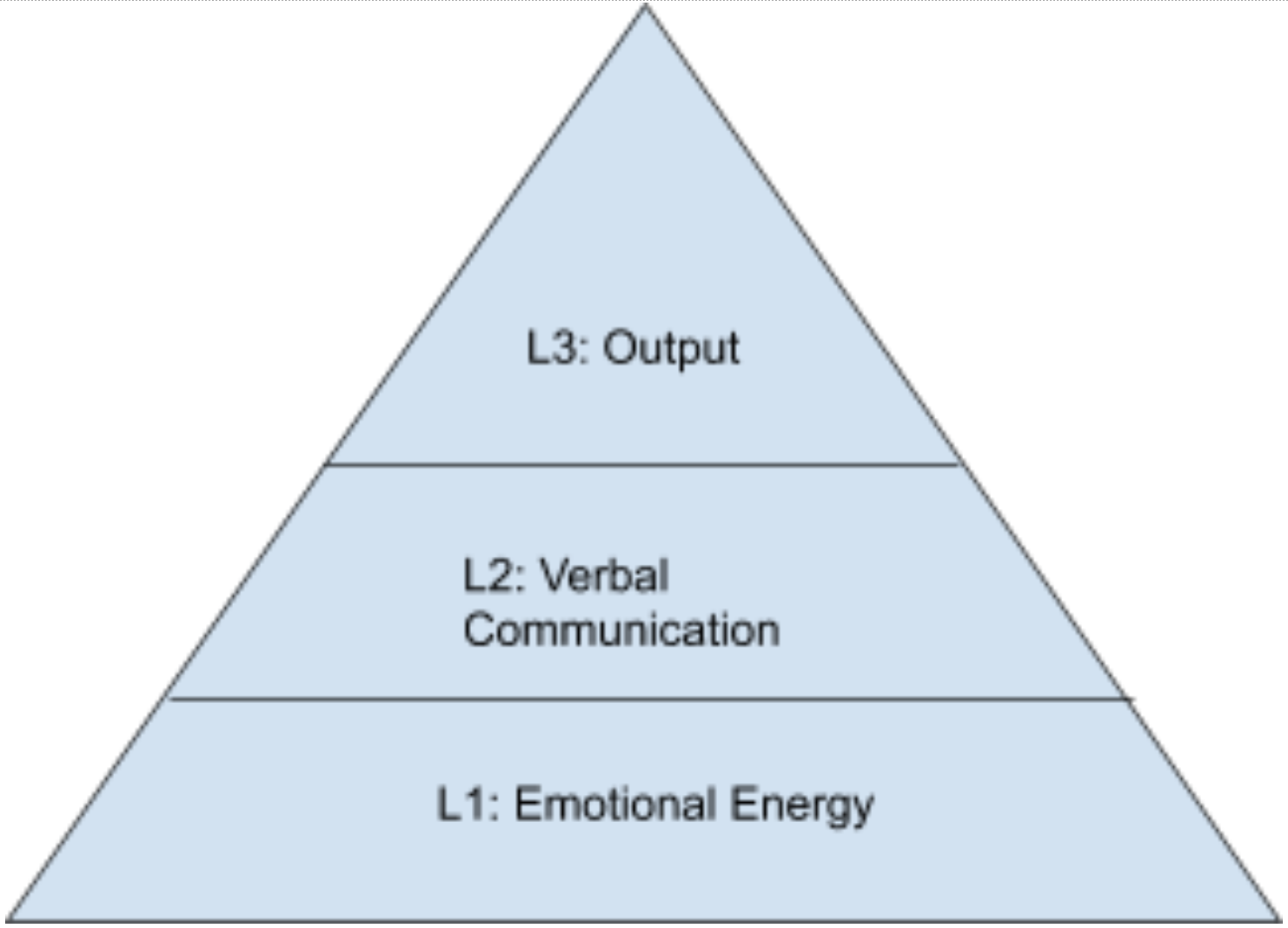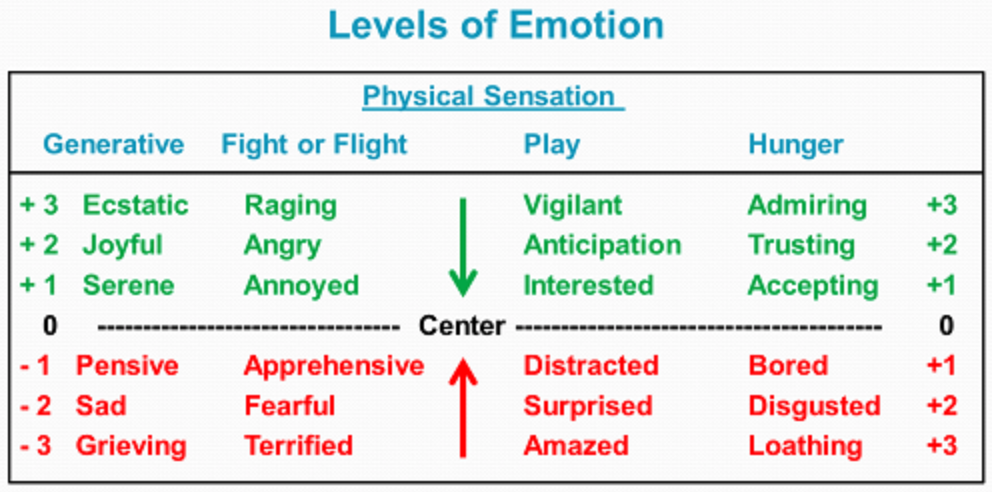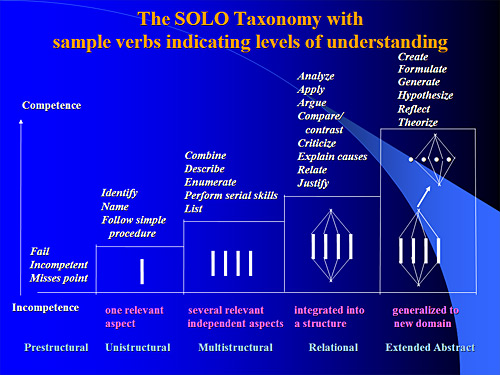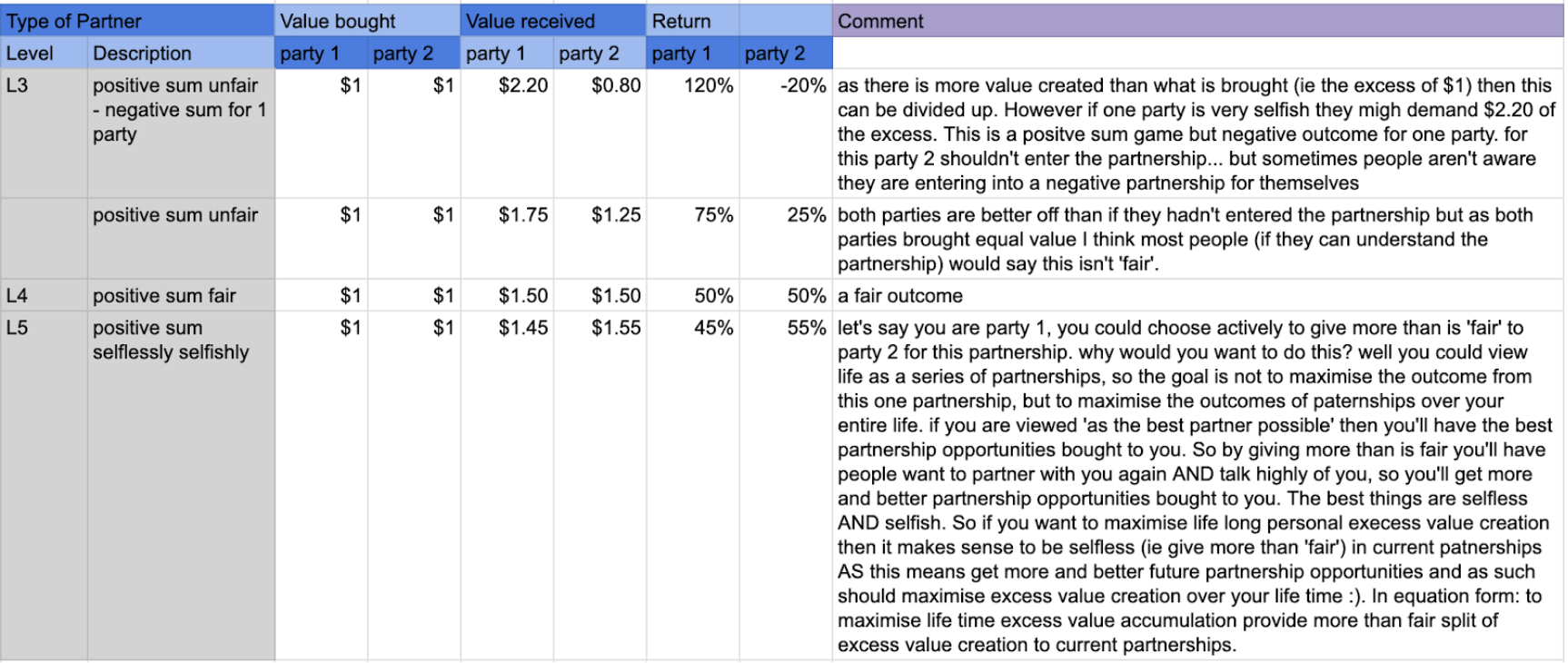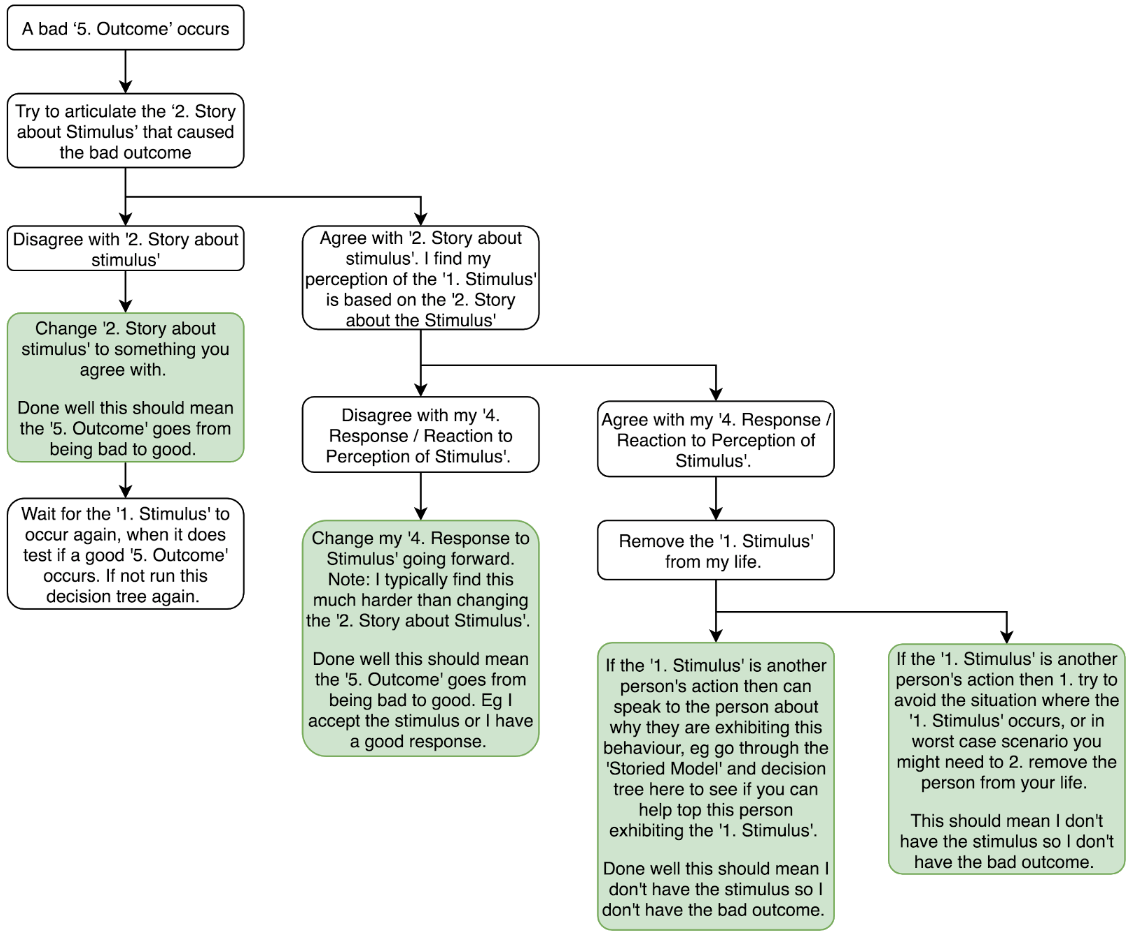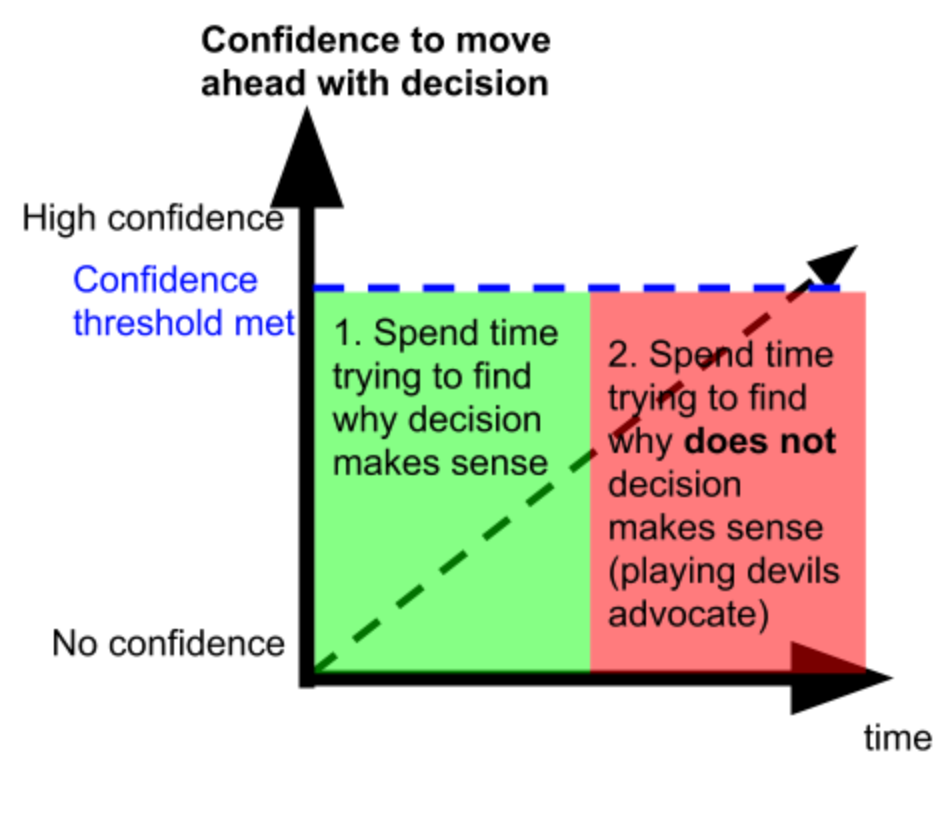Improving empathy means improving everything
/By Duncan Anderson. To see all blogs click here.
One sentence summary: Empathy is built by practicing trying to understand others. You are not born good at empathizing. IMO building empathy is a core way to improve everything.
Summary:
Have you tried to understand what others think?
I don't know why but I didn't start practicing trying to understanding others until my mid 20s. It wasn't on the curriculum!!
I now systematically try to empathize with others (details of how I do this below)
I also systematically try to empathize with myself.
The number of times I have had no idea of what is driving myself, I’ve reacted and not responded, is totally ridiculous!
It’s the best fun. I’ve learned so so so much!
Improving empathy means improving at everything?
Everything = ultimately the outcome of human capital (eg the chair you are sitting on, the food you eat, computer you use, etc)
Everything = outcome of decisions that have been made
Human capital:
Trying to understand others => makes you better at empathising => better at helping others
Better at empathising with others => better at understanding yourself => better at empathising with yourself => live a better life
Decisions:
Decisions = logic + emotion
Practicing empathising with others and yourself => better at emotional awareness => better at accurately explaining emotions => better at emotion regulation
Therefore increased empathy => increased resolution of emotion => better decision making quality
Values are logic which resonate as emotions
Want to help?
Want to help others? Practice trying to understand others and yourself. Aka cultivate empathy
Want to help yourself? Practice trying to understand others and yourself. Aka cultivate empathy
Want to make better decisions? Practice trying to understand others and yourself. Aka cultivate empathy
Want to help improve your own and society’s values? Practice trying to understand others and yourself. Aka cultivate empathy
Want to help? Cultivate empathy
Cultivate cultivate cultivate:
Are you physically fit? You go to the gym to build physical health.
Are you knowledge / logic fit? You read books to build your knowledge.
Jingle: Are you emotionally fit? Practice understanding others and yourself to build your empathy / emotional health / emotional intelligence.
Details for how I try to cultivate empathy are below.
++++++++++++++++++++++
Details:
Growth vs fixed mindset:
Fixed mindset = you are born good or bad at things. Eg good at maths. Eg bad at English
Growth mindset = built not born = you can cultivate anything.
If your friend has played 100 hours of a video game and you have played zero hours who is going to be better?
IMO everything is cultivated. You start off bad at everything. Bad at walking, bad at talking, bad at maths, bad at writing.
So basically a growth mindset should be applied to all mental abilities.
I believe the most fixed mindset words are someone is 'smart' or someone is 'dumb'.
Again, no one is born able to walk or talk, IMO skills are cultivated.
Smart = have spent time cultivating a skill.
Dumb = are yet to spend time cultivating a skill.
IMO don’t let anyone call you smart or dumb.
IMO don’t call anyone smart or dumb.
You are really good at maths, you have done a good job cultivating that skill.
Let me see if I can assist with this problem you are solving. One of the things I’ve been trying to cultivate is ‘thinking in models’, let me show you how I would try to represent this problem as a model.
You try to write a blog for the first time, it’s not very good. That’s because you’ve never tried writing!
Seinfeld is famous for pushing himself to write a joke a day. Want to get good at something, start practicing / cultivating!
Skill in this sense is often assumed to be a hard skill, such as the examples above (articulation, mathematics etc). Skills can also refer to soft skills.
IMO you are not born good at empathizing or bad at empathizing. You have either built empathy by trying to understand others or you are yet to cultivate this skill.
As with everything you’re practicing, you’ll likely not be correct the majority of the time early on as you develop your empathy muscle.
Ways to ‘cultivate’ empathy:
A: For yourself with yourself
Write down when you felt frustrated, when you felt excited, when you felt drained, etc in a doc.
Then on the weekend try to explain why.
Here is a model I use to try an unpack things which I called the ‘Storied Model’.
1. Stimulus
=> 2. Story about Stimulus
=> 3. Perception of Stimulus
=> 4. Response / Reaction to Perception of Stimulus
=> 5. Outcome (emotional outcome)
What I’m typically trying to do during the week is to note the ‘5. Outcome (emotional outcome)’ down with some context (eg this meeting) and then I try to investigate what happened and why through the other stories when I have the space.
Example: in the meeting on Tuesday about [X] I became frustrated, why did this happen?
Example: I was really excited on Wednesday when person [x] sent me this email, why did this happen?
Seriously this is SO ENERGISING!
B: For yourself with others
A decent portion of my work one on one weekly meetings is doing “A: For yourself with yourself” but with another person.
If you are anything like me you’ll miss many things about yourself and the situation. Speaking with others can really help you understand massively!
Example: While I was trying to self regulate, I was experiencing frustration in [meeting x], I’m hoping you can help me unpack this.
C: For others with yourself
“One of the most famous cognitive biases is the Fundamental Attribution Error, that is, the tendency to blame the actions of others on their internal characteristics, while excusing the actions of oneself due to external factors. The classic example is driving in traffic: a driver that cuts you off is a jerk, but if you cut a driver off it is because you are rushing to the emergency room.” Ben Thompson.
I try to assume positive intent and afford others the graces I give myself.
I note when I see others exhibiting strong emotions and the context and then investigate eg using the Storied Model when I have space ‘trying as hard as possible to look at the world through their eyes’.
THIS IS SO REVEALING, SO ENERGISING!
Example: in a meeting on Thursday it appears that Person A was being really equanimous. Why?
D: For others with others
“Everything that irritates us about others can lead us to an understanding of ourselves.” Carl Jung
This is ‘C: For others with yourself’ except with others, eg the person who you are analysing or someone who can help you get a better understanding.
Discussing others without them in the room with the intent to help is a beautiful, caring, positive sum action.
Discussing others without them in the room without the intent to help is character assination, it is politics, it is negative sum and it is totally not cool!
Example: I was really impressed with the calmness with which Person B handled siguation Y, do you think that is a fair characterisation of what happened? And if so thoughts on how they were able to do this so well?
“It’s good to learn from your own mistakes, it’s better to learn from others.”
I do learning from my immediate surrounds, but also try to incorporate the wisdom of others.
If you have read many books on economics you have probably learned a bunch about economics. If you have read many books on empathy then you have probably learned a bunch about empathy. You can read books / podcasts etc that will ‘allow you to walk a mile in someone else’s shoes’.
Fav podcasts:
Dear HBR - to learn empathy about different work circumstances such as ‘difficult people’, ‘overcoming negativity’, ‘ineffective leaders’, etc etc. It’s GOLD!
Where Should We Begin? with Esther Perel - live couples (romantic) counselling sessions. Everyone should listen to these IMO.
Reboot - effectively therapy sessions with entrepreneurs.
Quality books:
The Art of Empathy: A Complete Guide to Life's Most Essential Skill
Hillbilly Elegy: A Memoir of a Family and Culture in Crisis - about growing up poor and white in america. Super good!
Down and Out in Paris and London: George Orwell - yes the 1984 Orwell. It’s about his time being homeless in the Great Depression.
Improving empathy means improving at everything?
Everything = ultimately the outcome of human capital (eg the chair you are sitting on, the food you eat, computer you use, etc)
Everything = outcome of decisions that have been made
Human capital:
Trying to understand others => makes you better at empathising => better at helping others
Better at empathising with others => better at understanding yourself => better at empathising with yourself => live a better life
Decisions:
Decisions = logic + emotion
Practicing empathising with others and yourself => better at emotional awareness => better at accurately explaining emotions => better at emotion regulation
Therefore increased empathy => increased resolution of emotion => better decision making quality
Values are logic which resonate as emotions
Want to help?
Want to help others? Practice trying to understand others and yourself. Aka cultivate empathy
Want to help yourself? Practice trying to understand others and yourself. Aka cultivate empathy
Want to make better decisions? Practice trying to understand others and yourself. Aka cultivate empathy
Want to help improve your and societies values? Practice trying to understand others and yourself. Aka cultivate empathy
Want to help? Cultivate empathy


